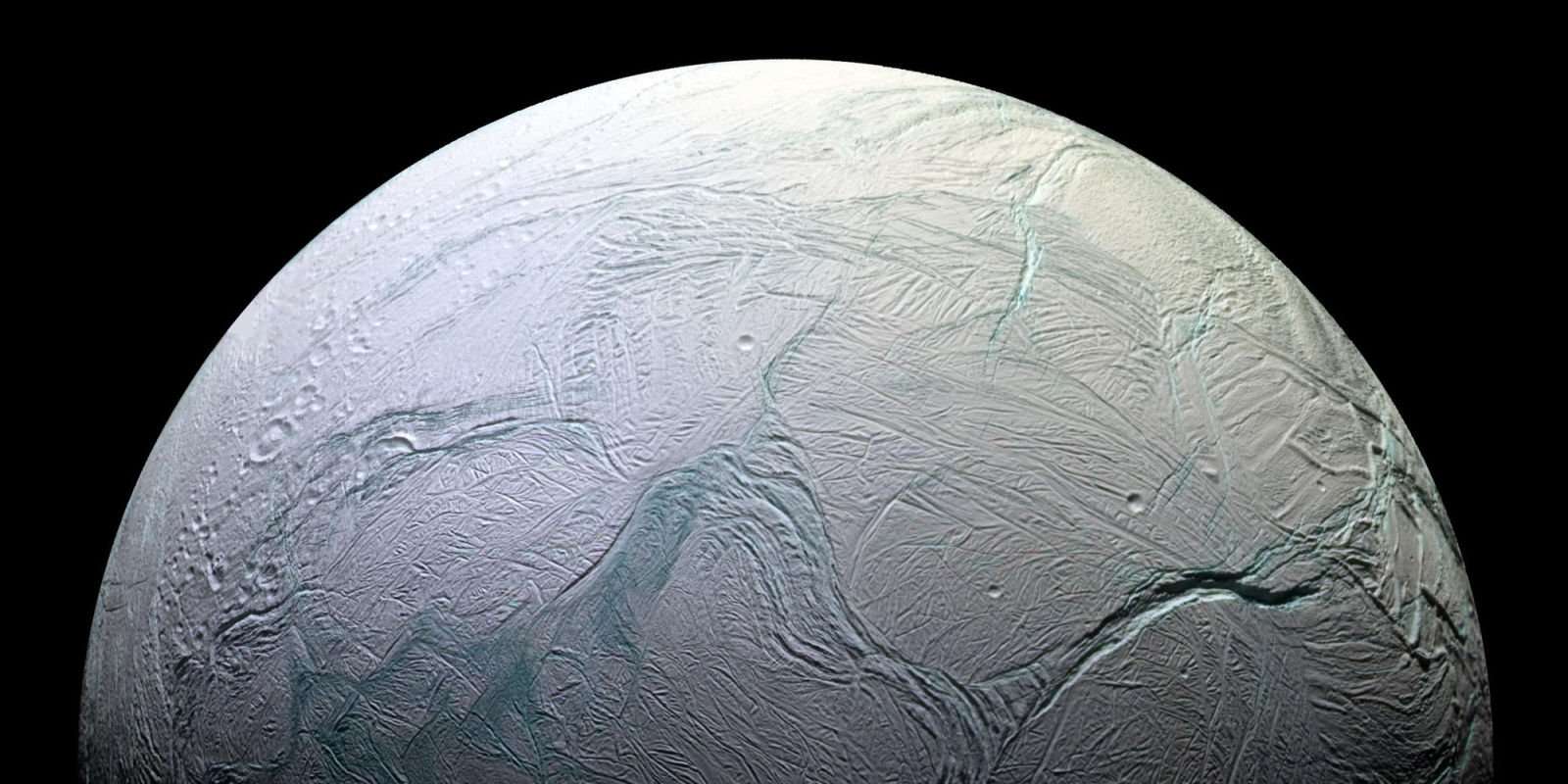When NASA researchers first realized in 2005 that Saturn's moon Enceladus has liquid water under its surface, they were stunned. "Tremendously exciting," Cassini project scientist Linda Spilker told Popular Mechanics. "I sort of call it jaw-dropping because we were so certain that Enceladus was too small to support activity like this. We expected it to be frozen solid."
Since then, the Cassini spacecraft orbiting Saturn has sent back amazing visuals and data about this small watery moon, now considered one of the best places to look for life beyond Earth. And today, NASA made the next big announcement about this promising place: The Cassini team found evidence of hydrothermal vents on Enceladus's ocean floor, which they document in a new study in Science.
Saturn's sixth largest moon, Enceladus. NASA/JPL-Caltech/Space Science Institute
These hydrothermal vents are fissures in the rocky core of Enceladus. They release water that has been heated by geothermal activity, and the jets of hot water carry minerals and nutrients that could support life. Some of those compounds were detected by the Cassini spacecraft when it flew through the water geysers that erupt from Enceladus's surface. Microbes, algae, tube worms, crabs, and even fish swim around hydrothermal vents in Earth's oceans. Maybe a similar alien ecosystem exists on the seafloor of Enceladus.
"We know from looking at the hydrothermal vents on the Earth—there's no sunlight there—and yet if you look near a hydrothermal vent that has the heat energy and the nutrients that you need in the liquid water, you find a very thriving community of life," says Spilker. "You find tiny crabs and tube worms and a very thriving community around these hydrothermal vents well away from sunlight. So we wonder, could life have begun in the same way in the Enceladus ocean as well?"
Cutaway view of Enceladus's subsurface ocean, rocky core, and hydrothermal activity. Around the north pole, there are many impact craters from collisions with other objects, but in the south, geologic activity wipes away the craters, and watery geysers erupt from the surface of the moon. NASA/JPL-Caltech/Space Science Institute
Around 2015, after more than a decade of collecting data in the Saturn system, the Cassini team concluded that what they were seeing on Enceladus was not just a liquid water reservoir under the surface ice, but an entire subsurface ocean that surrounds the whole moon. This was determined based on inconsistencies measured in Enceladus's libration, or wobbling in the moon's rotation as it orbits Saturn. Once they knew there was a large ocean and likely a rocky core, the team speculated that if the moon is warm enough for liquid water, then it might have enough geologic activity for hydrothermal vents. And if there are vents, then there could be life—even out in the distant solar system almost a billion miles from the sun.
Now we have reason to believe there are indeed hydrothermal vents on the watery moon Enceladus. "What we have is this chain of evidence, not just one thing but a number of things that point toward the very real possibility of these hydrothermal vents," says Spilker.
Most of that evidence came from the flybys Cassini made through Enceladus's geysers. The craft used two science instruments, the Cosmic Dust Analyzer (CDA) and Ion and Neutral Mass Spectrometer (INMS), to analyze samples from the plumes. Sure enough, the spacecraft picked up clues that point to hydrothermal vents.

jgrunn on April 13rd, 2017 at 19:16 UTC »
The thought is Europa has been on the same development time-line as Earth. This means 4.61 billion years of something could swim beneath that ice.
retrologist on April 13rd, 2017 at 18:55 UTC »
GIF of the Enceladus plume: http://i.imgur.com/b7p2buw.gif
Redwhite214 on April 13rd, 2017 at 18:11 UTC »
We've got to send new probes and a lander to Enceladus. I hope I get to see a submarine mission to Enceladus or Europa in my lifetime. Scientists are rightly cautious, talking for now about single celled organisms, but imagine if there is actually multicellular life there - what a discovery that would be.